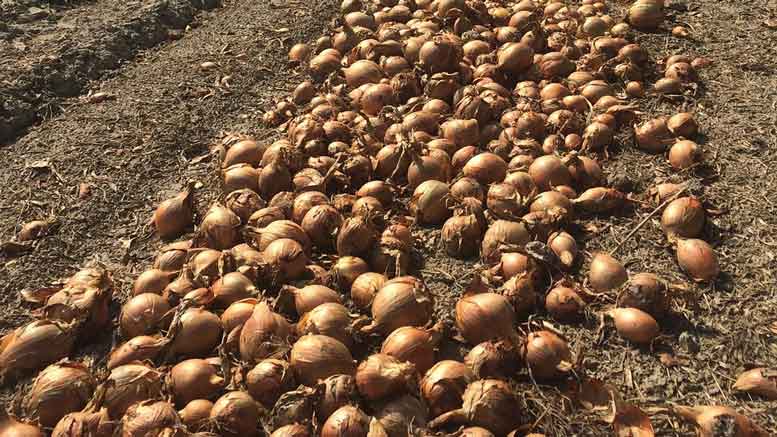|
Click to listen to this article
|
By John Harris, Owner and Founder, Paradigm Fresh
There are a lot of items to unpack as we head into 2024 and the back half of the storage season. Many factors are in play that will influence the market going into the spring. I talk to many people daily and weekly and have tried to put it all together and give my opinion about the factors driving this market as we enter the spring shipping season.
Canada
Canada has a short crop this year. There was a lot of rain during harvest time, and a lot of product was left in the field. Canada should be buyers of onions earlier than usual – possibly January or February on yellows this year, which will strain U.S. supplies that usually aren’t there this time of year.
Texas
The Rio Grande Valley, even more so than Mexico, has a severe water shortage. There is enough water to start the crop; the big question mark is will there be enough water to finish the crop. There is great risk in planting such a high dollar crop as onions and not being able to finish the growing season after most input costs have been put into the crop. It appears that Mother Nature will need to come through with rainfall to get a lot of this crop to the finish line.
Mexico
Mexico had some timely rains that likely got this crop back on track from the early predictions that it was going to be short. There are three main growing regions in the Tampico area. The northern and middle regions, which are the first two harvest regions, look to be fully on track for normal harvest and acreage. The southern region, the third harvest district, has more concerns of being off acreage, putting late March and April imports up in the air as what to expect.
The Netherlands
The Netherlands also has a short crop this year. We don’t talk about the Netherlands very often, but generally, it’s a pretty good-sized exporter into the U.S. However, with its short crop, the country may become an importer from the U.S. I’m not super familiar with this market, but this is certainly not a normal circumstance. The Netherlands’ government subsidizes freight costs to the U.S., and its onion imports strain the U.S. markets. It doesn’t appear that this will be the case this year.
Peru and Chile
Sweet onions have been short from this region all year. Sweets are almost an entirely separate category from conventional onions; however, U.S. supplies are compensating this year for the imports that are usually more prevalent on the U.S. store shelves this time of year.
Washington
Washington had a typical crop in terms of acreage. The state had an excellent growing year and has a bit more size on its crop this year, which probably accounts for the increase in more stocks on hand reported from last year to this year. Quality in Washington has been, overall, very good thus far, and I expect that to continue.
Idaho and Oregon
The Treasure Valley of Eastern Idaho and Oregon felt the effects of Hurricane Hilary in August in terms of poorly timed heavy rain during harvest. It couldn’t have come at a worse time for crop health and long-term storability. The concerns about the amount of shrink this region will see as the season progresses will be in full effect this spring. Stocks on hand probably don’t accurately reflect the number of bags that will be packed and shipped out of the area this spring. I know members of the industry are working diligently in the area to manage the storage sheds appropriately and to ensure they are putting together the type of pack people expect to receive.
So, where does this leave us with expectations on what to prepare for regarding the onion market for the next three to five months? On paper, all things are lining up for a strong spring onion market. It’s hard to put a dollar amount on what to expect, as strong economies are central to strong onion markets. This may be unpopular opinion, but my take in poor economies is that retailers are driven toward margin above volume. There is a tipping point where volume will begin to fall if price points get too inflated. The state of our U.S. economy may have a very large dictation in just how far and how strong this spring onion market is able to become.
Anybody reading this knows that the crystal ball for interpreting markets three to four months out is tough. I have often been wrong on both sides of the market with my expectations at this point in my career. I am not a grower, and I don’t have a dog in this fight or a monetary reason to press up or press down my expectations for this market. I’ve taken the information I’ve been following and tried to do more listening than speaking when talking to different people in different areas that know more than I do. With my years of experience on the sales desk, I can reasonably deduce that based on all the information we have and know is true, the chances of having a solid U.S. domestic onion price in the spring is bullish. This article was a bit intimidating to write as there is a lot of information to sort through, especially on a global scale this year. I hope that the information being provided is sound and helpful in any decision making that comes along for you and your company as we go forward into this new year. I wish you a very successful and blessed 2024.


